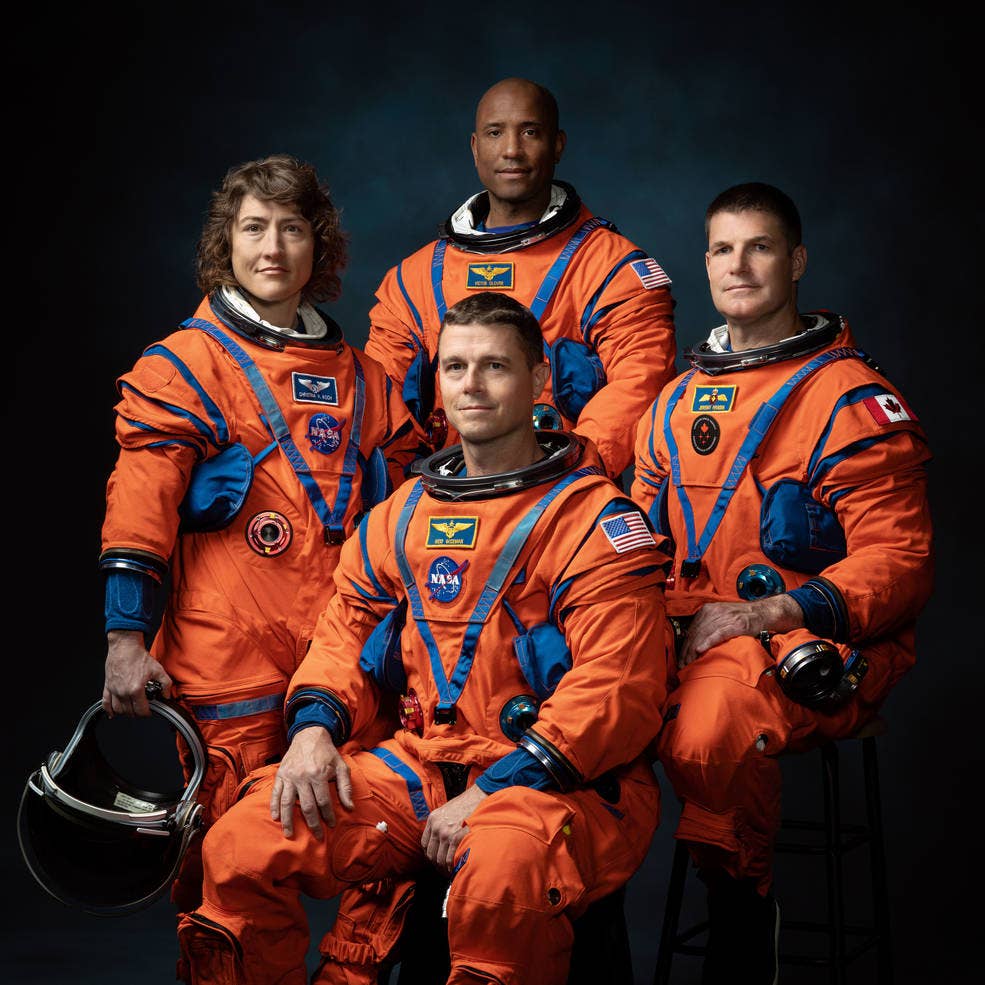NASA Unveils 4-Member Artemis II Crew
NASA announced the four astronauts set to crew Artemis II, the first crewed flight in the vicinity of the moon in more than 50 years.

The crew of NASA’s Artemis II mission (left to right): NASA astronauts Christina Hammock Koch, Reid Wiseman (seated), Victor Glover, and Canadian Space Agency astronaut Jeremy Hansen. [Credit: NASA]
NASA announced the four astronauts set to crew Artemis II, the first crewed flight in the vicinity of the moon in more than 50 years.
The crew roster, which was announced in a ceremony Monday morning at NASA Johnson Space Center’s Ellington Field in Houston, also included the first Canadian Space Agency astronaut.
The 10-day Artemis II mission is set to launch on the Space Launch System rocket in November 2024 and will be the first crewed flight test for the space program. The flight will validate the life-support systems of the Orion's spacecraft, as well as what is needed for humans to live and work in deep space. It is considered to be a critical step toward establishing a long-term human presence on the moon, according to NASA.
Artemis II Crew members:
- Mission Specialist Christina Hammock Koch, engineer
- Mission Specialist Jeremy Hansen, F-18 pilot and Canadian astronaut
- Artemis II Pilot Victor J. Glover, Jr., Naval aviator and test pilot
- Artemis II Commander G. Reid Wiseman, Naval aviator and test
“The Artemis II crew represents thousands of people working tirelessly to bring us to the stars. This is their crew, this is our crew, this is humanity's crew,” NASA Administrator Bill Nelson said during the ceremony. "NASA astronauts Reid Wiseman, Victor Glover, and Christina Hammock Koch, and CSA astronaut Jeremy Hansen; each has their own story, but together, they represent our creed: E pluribus unum – out of many, one. Together, we are ushering in a new era of exploration for a new generation of star sailors and dreamers—the Artemis Generation.”
Hours before the crew unveiling Monday morning, Nelson described the high stakes behind the mission, and getting to the moon's resource-rich South Pole before China, which has launched an aggressive space program.
"We want to get to the South Pole before they do," he told CNN. Water is located at the moon's South Pole, and "if you have water, you have rocket fuel," he said.
Building on Artemis I
In December, NASA's Orion spacecraft—the agency's newest human-rated spacecraft—concluded its 1.4 million mile journey around the moon and back, splashing down in the Pacific Ocean. During the 26-day mission, Orion performed two lunar flybys within 80 miles of the moon's surface, traveling nearly 270,000 miles away from Earth.
Over Orion’s nearly 26-day journey, the spacecraft performed two lunar flybys within 80 miles of the moon’s surface and traveled nearly 270,000 miles away from Earth—the farthest any human-rated spacecraft has flown.
“With Orion safely returned to Earth, we can begin to see our next mission on the horizon, which will fly crew to the Moon for the first time as a part of the next era of exploration,” said Jim Free, NASA associate administrator for the Exploration Systems Development Mission Directorate. “This begins our path to a regular cadence of missions and a sustained human presence at the Moon for scientific discovery and to prepare for human missions to Mars.”

Sign-up for newsletters & special offers!
Get the latest FLYING stories & special offers delivered directly to your inbox






